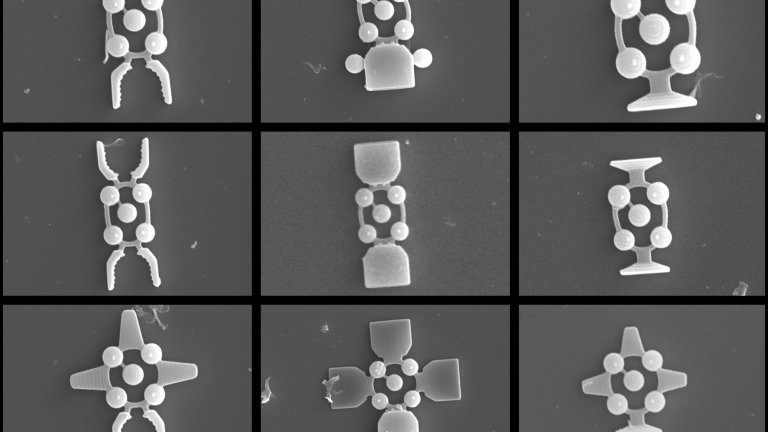
© Edison GERENA / ISIR-UPMC / CNRS Images
View the mediaFolder
Nanosciences and nanotechnologies are revolutionising research by handling matter on a nanometric scale, close to the atom. They open up innovative prospects in various fields, including materials, medicine, electronics and energy.

© Edison GERENA / ISIR-UPMC / CNRS Images
View the mediaNanosciences and nanotechnologies have grown tremendously since the 1990s, thanks to the development of new processing, observation and analysis tools. The term “nano” is a reference to the nanometre scale.
Nanosciences are concerned with the study of properties and phenomena on a nanoscale. On this scale, the physical, chemical and biological properties of materials can be different from those on larger scales (size effects, quantum effects, etc.). Understanding these phenomena is behind an interdisciplinary approach that combines fields such as physics, chemistry, biology and materials science.
Nanotechnologies are the formalisation of nanoscience concepts and processes with a view to developing applications. For example, they allow the creation of nanomaterials such as carbon nanotubes and nanoparticles, which have unique properties due to their size. They are also the root of developments such as nanosensors for detecting chemical or biological substances, nanomedicines for targeted treatments, and nanocomposites for lighter and more resistant materials.
Discover through images the extent of the research being done in nanosciences and nanotechnologies in CNRS laboratories.
Keywords: nanosciences, nanotechnologies, nanometre, materials, electronics, nano-object, medicine
Our work is guided by the way scientists question the world around them and we translate their research into images to help people to understand the world better and to awaken their curiosity and wonderment.